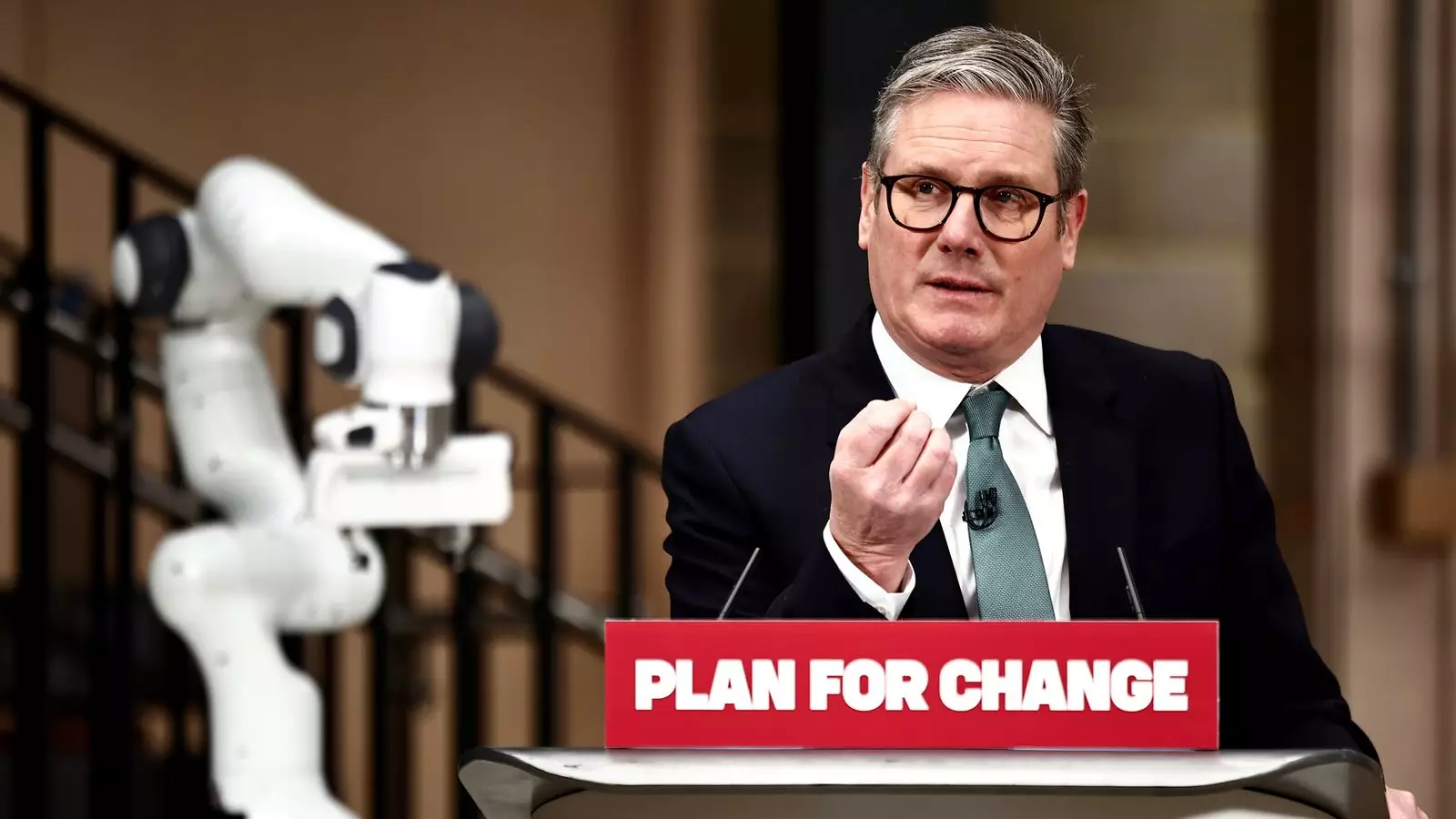As the UK continues to grapple with a turbulent economic environment, Labour leader Sir Keir Starmer has made it clear that maintaining economic growth is his administration’s primary objective. In his recent remarks addressing the challenges posed by rising market volatility, Starmer emphasized a decisive approach to government spending. He stated, “The number one mission of this government is economic growth,” which encapsulates both an acknowledgment of the current crisis and a call to action for transformative economic policies.
The urgency of Starmer’s sentiment becomes more apparent in light of the rising costs of government borrowing. With long-term borrowing rates seeing steep increases, the Chancellor faces mounting pressure to adhere to stringent fiscal rules. Such an environment not only impacts government operations but also reflects broader trends that could influence public perception and investor confidence. In an era where monetary policy must adapt swiftly, the need for a comprehensive strategy becomes more pressing than ever.
The data speaks volumes about the precarious situation. On Monday, the effective interest rate for long-term borrowing surged to 5.47%, marking the highest level since 1998. This alarming figure, along with a 10-year bond yield hovering around 4.86%, mirrors the economic strains seen during the global financial crisis. As such, the government may find itself at a crossroads, where adhering to fiscal guidelines might require uncomfortable sacrifices.
Sterling’s decline to a low of $1.21 exemplifies the uncertainty looming over the UK economy. Such fluctuations not only affect governmental budgets but also resonate with ordinary citizens, particularly concerning mortgage rates, which are likely to escalate as a response to market instability. The Chancellor must navigate these impending challenges, balancing the need for austerity with the demands of a populace already strained by economic pressures.
Sir Keir Starmer’s assertion that the Treasury will be “ruthless” in its spending cuts could signify a stark shift in policy that might be met with resistance from voters. The forthcoming spending review, which expects government departments to deliver efficiency savings equivalent to 5% of their budgets, may carry significant political ramifications. It’s essential to understand that while strict fiscal discipline is necessary, the implications of such cuts could resonate negatively across various sectors of society already feeling the squeeze from inflation and rising costs.
Starmer’s comments about the necessity of making tough decisions underscore the gravity of the situation facing the government. Nevertheless, whether voters will accept austerity measures when they fear for their financial stability remains an open question. The electorate’s prior experiences with austerity and its consequences will likely loom large in public discourse.
While Sir Keir Starmer’s leadership is commendable for its commitment to evaluate the party’s economic standing, uncertainty looms regarding the future of his Chancellor, Rachel Reeves. Starmer’s refusal to confirm her position raises more questions than answers about party cohesion and strategy moving forward. The Conservatives have seized upon this ambiguity, suggesting that the Labour Party lacks direction in these uncertain times.
This internal dissonance could pose challenges for Labour as the political landscape shifts. For Starmer to project strength and instill confidence in his party’s direction, he needs to deliver consistent messages about leadership and stability. By failing to solidify Reeves’ position, he may inadvertently fuel skepticism about the party’s readiness to govern effectively in the midst of economic turbulence.
The UK finds itself at a critical juncture, where economic uncertainty demands decisive action and clear leadership. Starmer’s resolve to prioritize economic growth must be balanced with the realities of fiscal responsibility. The choices made by his government in the coming months will play a pivotal role in shaping the economic future of the nation, influencing both investor confidence and public sentiment.
The way forward will hinge on navigating the complex interplay between expenditure cuts and stimulating growth, all while maintaining party unity and public trust. As the markets continue to fluctuate, the fundamental question remains: can the Labour administration effectively manage these economic challenges while holding true to its principles of governance? The answers will unfold in what promises to be a daunting landscape ahead.



Leave a Reply